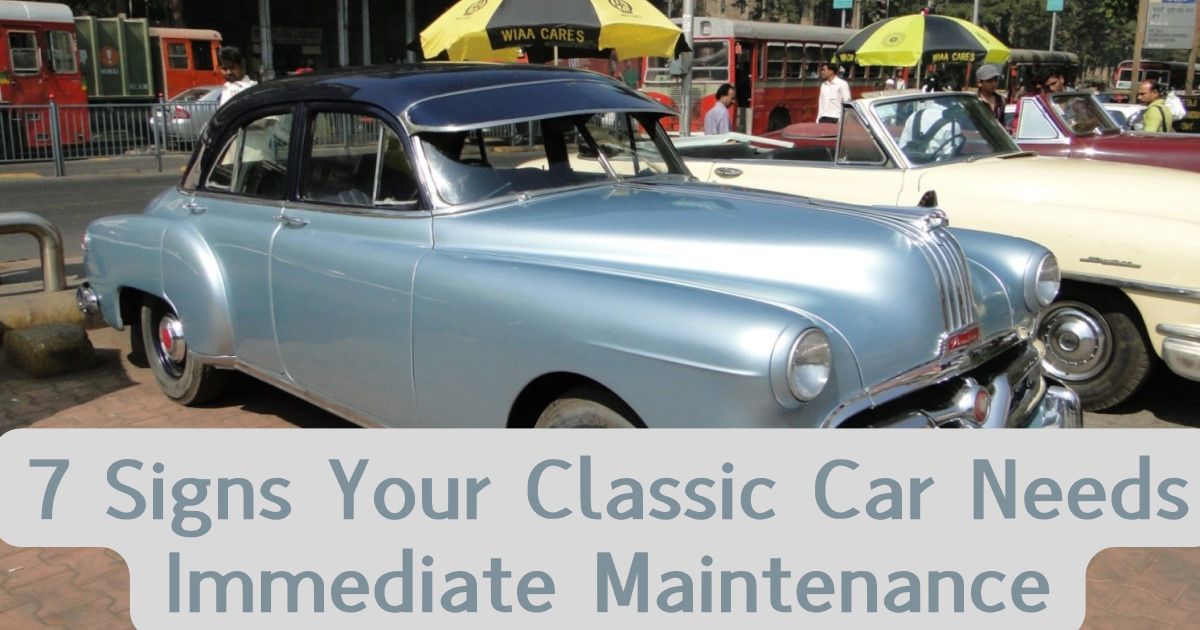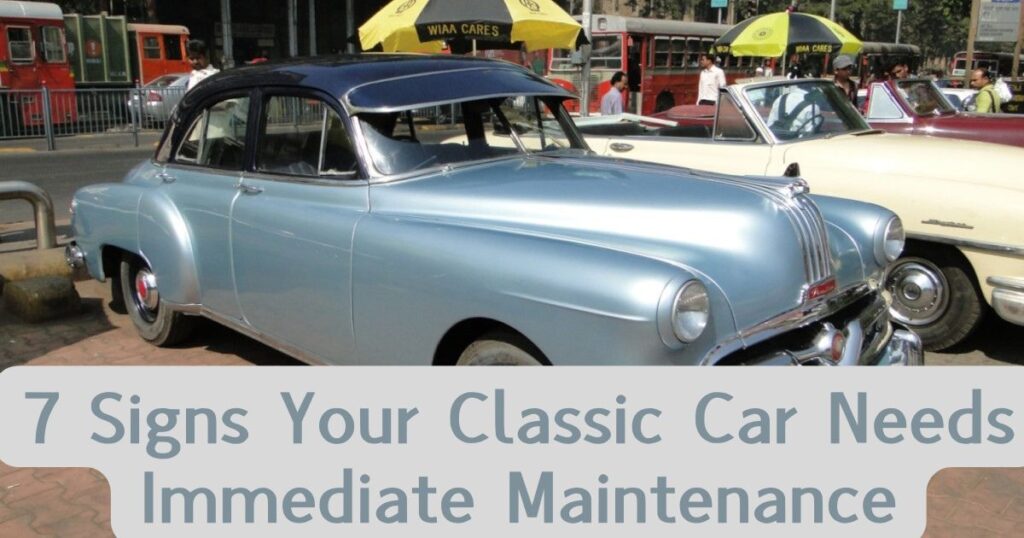
Owning a classic car is like owning a time machine — every drive transports you back to an era when style, craftsmanship, and attention to detail ruled the road. But as any classic car enthusiast knows, with that nostalgic charm comes a fair share of maintenance challenges.
These beauties need a little more care and attention than your everyday modern car, and sometimes they like to send us subtle (or not-so-subtle) hints that something’s not quite right.
If you’ve ever experienced the joy of cruising in your vintage vehicle only to be met with a strange noise, sluggish performance, or a dashboard light that just won’t quit, this article is for you.
We’re diving into seven telltale signs that your classic car might need some immediate maintenance. And while the list may seem daunting at first, remember: the more you know, the longer you’ll keep your classic running smoothly. Let’s keep those memories in motion!
Unusual Engine Noises
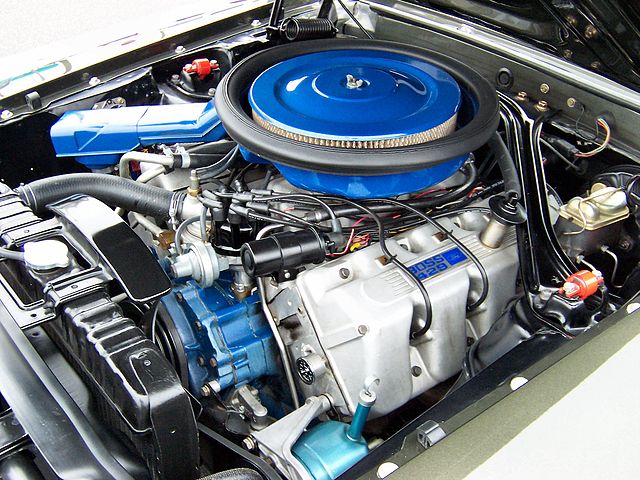
One of the purest joys of owning a classic car is the distinctive growl of the engine. But if your car’s smooth purr has started to resemble something closer to a growl, knock, or rattle, it’s time to pay attention. Unusual engine noises can signal anything from loose parts to more serious internal wear.
For example, knocking sounds might indicate problems with the crankshaft or pistons, while a persistent ticking could mean there’s an issue with your valve lifters. These sounds aren’t just quirks of an old car; they’re often a cry for help.
Regularly listen to your engine, especially during start-up or after a long drive. If something sounds off, it’s better to diagnose the problem sooner rather than later. A simple tightening or part replacement can prevent a more expensive repair down the road.
Sluggish Performance or Poor Acceleration

There’s nothing quite like the feel of stepping on the gas and feeling that classic car come alive under you. So, when your once-snappy ride starts to feel sluggish, it’s hard to ignore. If your car hesitates when accelerating, struggles to maintain speed, or just feels underpowered, there are several potential culprits.
Issues with fuel delivery, clogged air filters, worn spark plugs, or ignition system failures can all affect your car’s performance. Another common cause of sluggish acceleration is a problem with the carburetor, which is essential for mixing air and fuel.
If it’s out of sync or clogged, it won’t deliver the fuel your engine needs to run at full capacity. Checking your fuel system, changing spark plugs regularly, and maintaining the carburetor can help bring your classic car’s performance back to life.
Related: 9 Classic Car Maintenance Mistakes and How to Avoid Them
Brakes Feeling Soft or Spongy

Let’s face it — no matter how much horsepower your classic car boasts, stopping power is just as important as going fast. If you notice your brakes feeling soft, spongy, or less responsive than usual, it’s a red flag you shouldn’t ignore. Braking issues could stem from worn-out brake pads, low brake fluid, or air trapped in the brake lines.
Soft brakes might also signal an issue with your car’s hydraulic system, which is especially important in classic cars that often rely on older, less efficient braking systems.
Routine brake inspections and fluid checks are a must to keep your car safe and responsive. Replacing brake pads or rotors when they show signs of wear can prevent more costly (and dangerous) problems later on.
Fluctuating Oil Pressure
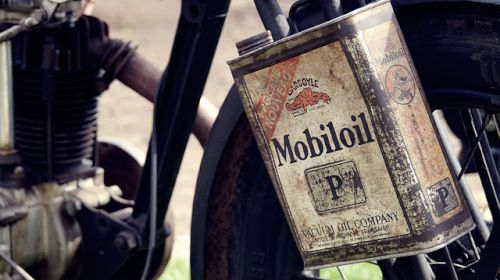
Oil is the lifeblood of your engine, and maintaining the correct oil pressure is crucial for keeping everything running smoothly. If you notice fluctuating oil pressure on your dashboard gauge, it’s time to take action.
Low oil pressure can indicate worn-out bearings, an oil pump issue, or even an oil leak — all of which can lead to significant engine damage if left unchecked.
One of the best ways to avoid this is by regularly checking your oil level and condition. Use high-quality oil suited to your vehicle’s age and engine type, and don’t forget to change the oil filter.
For classic cars, it’s also a good idea to invest in an oil pressure gauge if your vehicle doesn’t already have one. Staying on top of oil changes and pressure monitoring can extend the life of your engine and keep that vintage machine running strong.
Related: 7 Fluids to Regularly Check in Your Classic Car
Transmission Slipping or Rough Shifts

Nothing breaks the classic car driving experience more than a slipping transmission or rough, jerky shifts. Transmission issues can sneak up on you, especially in older cars that rely on older technology and parts.
If your car is struggling to shift gears or you notice the transmission slipping (where it feels like the car is slipping out of gear on its own), don’t ignore it.
This could point to issues with the transmission fluid, a worn-out clutch, or even more serious internal damage. To keep things running smoothly, check the transmission fluid regularly. It should be clean, without a burnt smell or dark color.
Changing your transmission fluid according to your car’s recommended schedule is key, and in some cases, a full transmission service might be required to keep your car shifting like a dream.
Persistent Exhaust Smoke
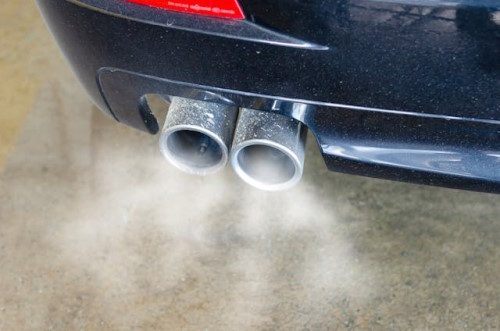
While a little puff of smoke from the exhaust on a cold morning is normal, persistent smoke is not. Different colors of exhaust smoke can indicate various underlying issues.
For example, blue smoke means your engine is burning oil — usually a sign of worn-out piston rings or valve seals. White smoke could indicate a coolant leak, while black smoke might suggest a rich fuel mixture or problems with your fuel injectors.
The important thing here is to address the issue before it leads to more significant damage. A quick inspection of your car’s engine, fuel system, or even the exhaust itself can help pinpoint the source.
Fixing these issues early on can prevent major repairs and keep your car from turning into a mobile smoke signal.
Battery Issues or Frequent Dead Batteries
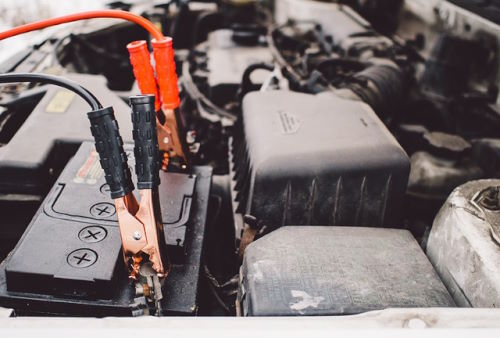
Classic cars often sit for extended periods, so battery issues are a common frustration. If your car’s battery frequently dies or struggles to hold a charge, it could be a sign of a failing alternator, poor battery connections, or simply an old battery that needs replacing.
To avoid getting stranded, it’s a good idea to use a battery tender if your car is going to be sitting for a while. This helps maintain the battery’s charge and prolong its life. Additionally, check your battery terminals regularly for corrosion and ensure the connections are tight.
If your battery is more than three to five years old, it might be time to invest in a new one to keep your car starting reliably.
Final Thoughts
Classic cars are a labor of love, and staying on top of maintenance is part of the journey. By keeping an eye (and ear) out for these seven signs, you can prevent small issues from turning into major headaches, and ensure your vintage beauty stays on the road for years to come.
Do you have any classic car maintenance tips or stories to share? We’d love to hear them! Drop a comment on Facebook with your best advice, or show off your ride with a photo.
Related Articles:

